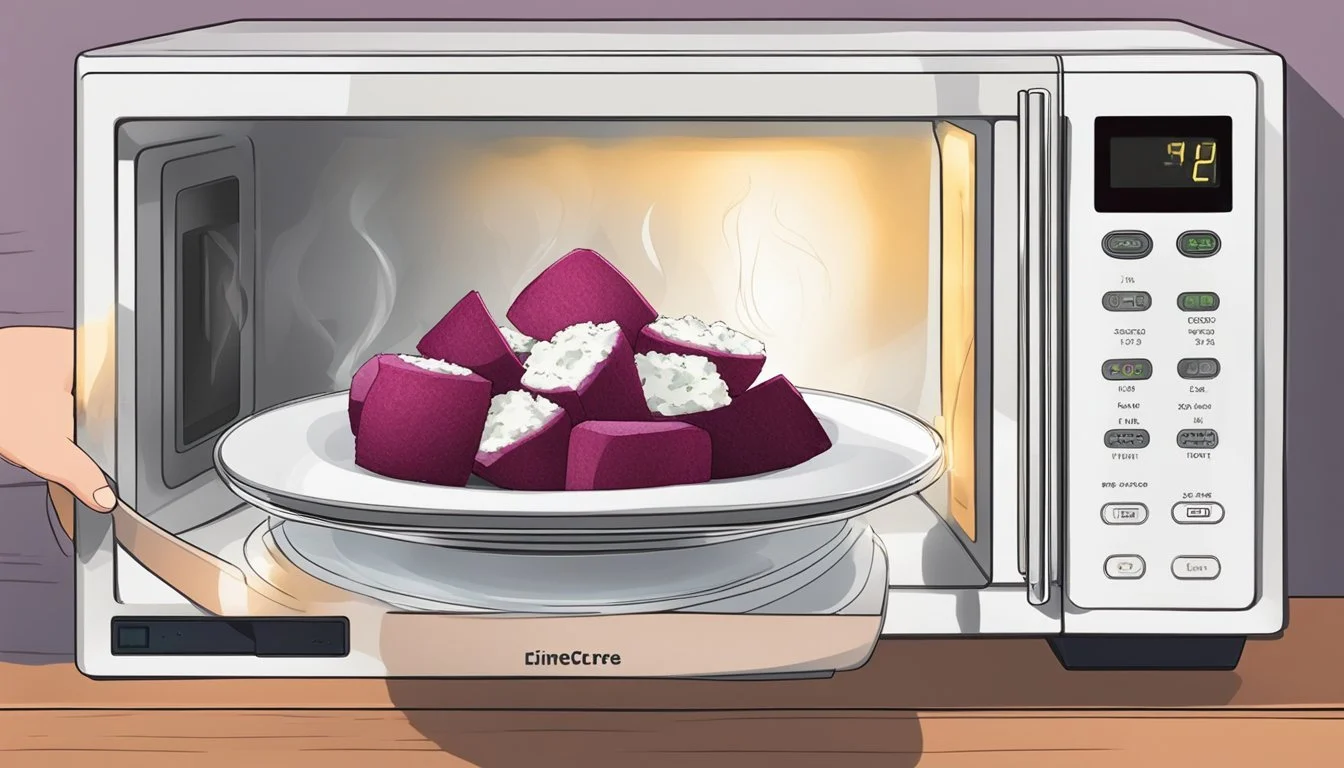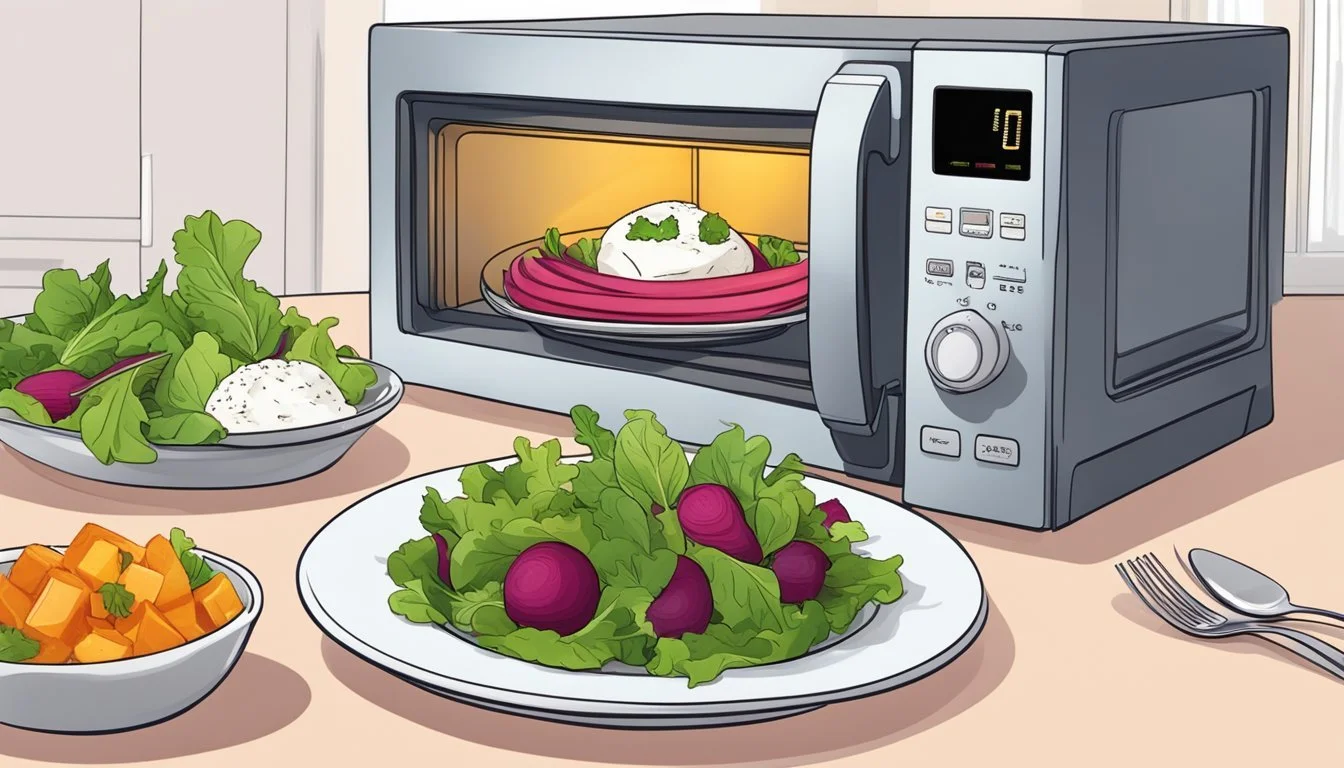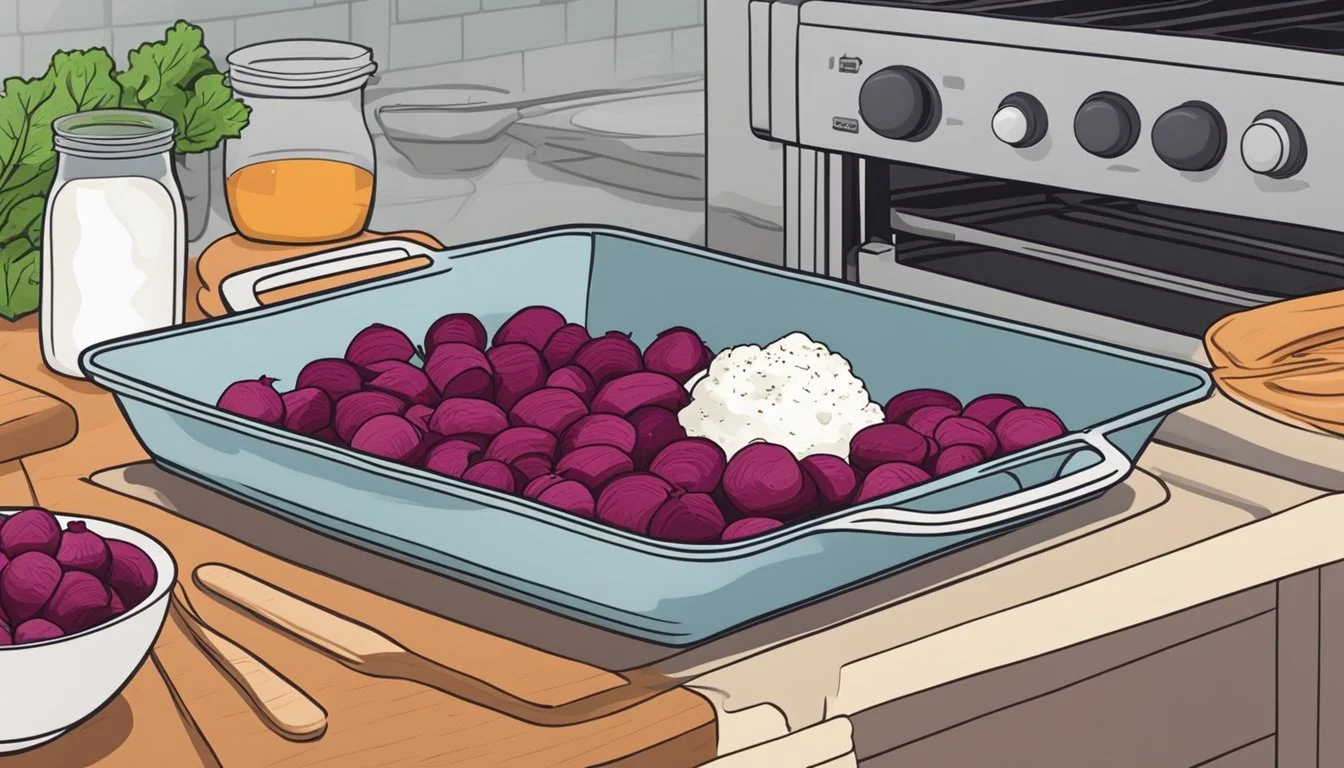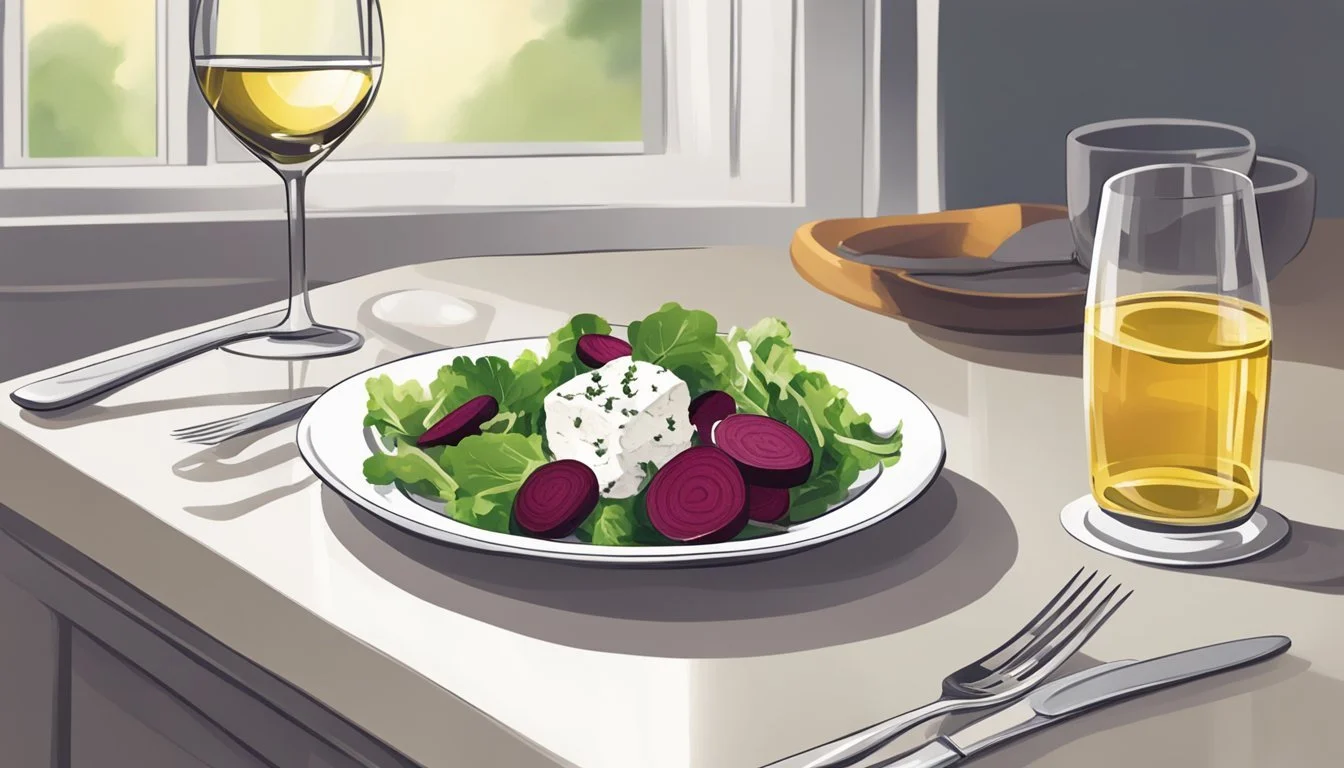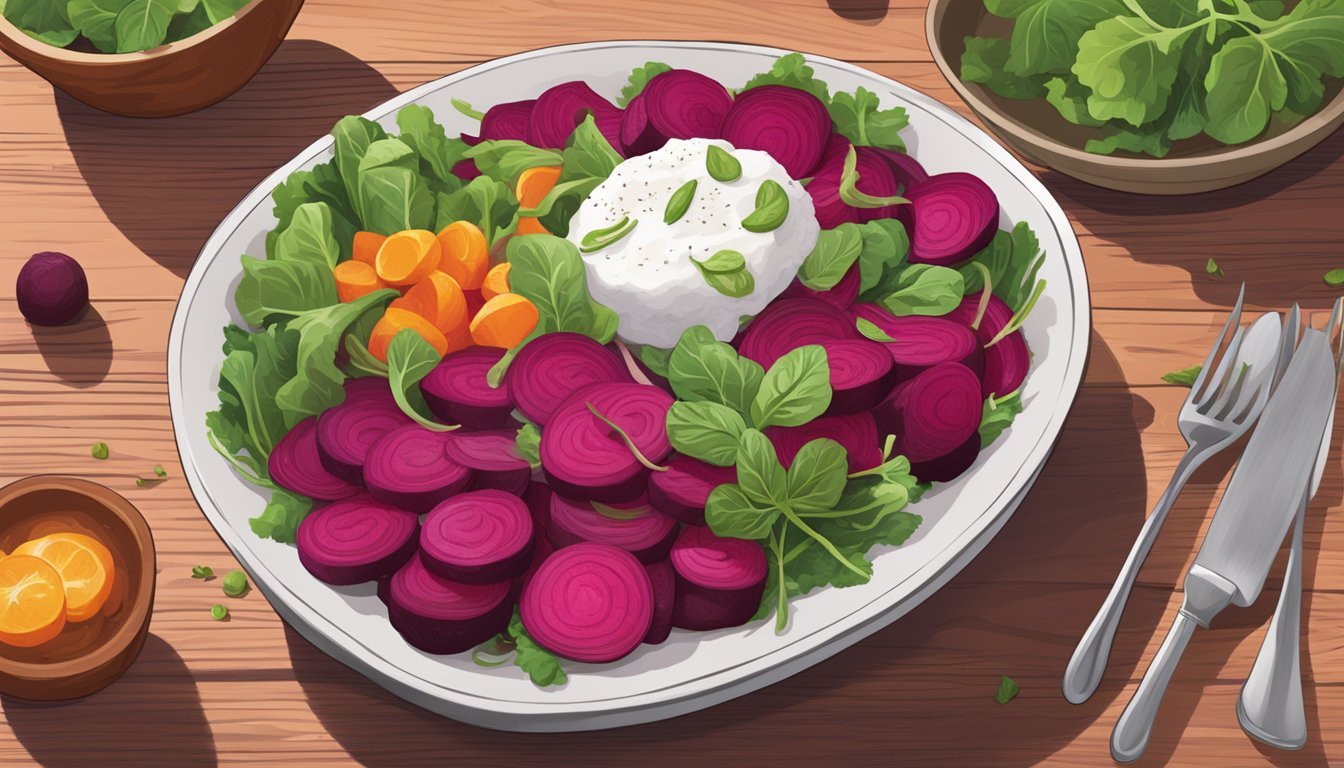How to Reheat Beet and Goat Cheese Salad
Best Techniques for Fresh and Flavorful Results
Reheating a beet and goat cheese salad while preserving its freshness and flavors can be challenging, but it's definitely achievable with the right approach. This salad, beloved for its vibrant colors and healthy ingredients, requires careful handling to maintain its appeal. To reheat without compromising texture, warm the beets separately for a short time in the microwave and avoid heating the goat cheese to prevent it from melting.
Beets, rich in earthy flavors, are best warmed gently to enhance their natural sweetness without becoming soggy. Separately reheating the salad's elements like the beets and then combining them with fresh greens and chilled goat cheese ensures that each component retains its unique characteristics. This method not only preserves the salad's nutritional benefits but also keeps it looking and tasting fresh.
For those looking to enjoy a nutritious and flavorful meal, a beet and goat cheese salad is an excellent choice. It's simple to prepare and, with the right reheating technique, can be just as delightful as when freshly made. The careful separation of ingredients before reheating ensures you can enjoy this salad's wholesome goodness anytime.
Understanding Beet and Goat Cheese Salads
Beet and goat cheese salads are beloved for their vibrant colors and contrasting textures. These salads often feature roasted beets, creamy goat cheese, mixed greens, and a tangy vinaigrette, providing a balanced mix of nutrients and flavors.
Key Ingredients
The primary ingredients in a beet and goat cheese salad include roasted beets, creamy goat cheese, and mixed greens. Roasted beets offer a sweet, earthy flavor that pairs well with the tanginess of goat cheese. Mixed greens, such as arugula, add a slight peppery taste and a crisp texture. Vinaigrette dressing, often made with balsamic vinegar, enhances the flavors and ties the ingredients together.
Roasted Beets: Sweet, earthy.
Goat Cheese: Creamy, tangy.
Mixed Greens: Peppery, crisp.
Vinaigrette: Tangy, enhances flavor.
Nutritional Benefits
Beet and goat cheese salads are packed with nutrients. Beets are rich in fiber, potassium, vitamin C, and iron, contributing to digestive health, blood pressure regulation, immune function, and oxygen transport. Goat cheese provides essential fats and proteins, while mixed greens supply additional vitamins and minerals.
Fiber: Improves digestion.
Potassium: Helps regulate blood pressure.
Vitamin C: Boosts the immune system.
Iron: Essential for oxygen transport.
Goat Cheese: Adds fats and proteins.
Varieties of Beet Salads
There are many variations of beet and goat cheese salads, each offering unique flavors and textures. Some versions include toasted nuts for added crunch, or fresh fruits such as pears for a hint of sweetness. Different greens can also be used, such as spinach or kale, to change the salad’s profile. The vinaigrette can vary from honey balsamic to lemon-based dressings, further diversifying the flavor.
Nuts: Add crunch.
Fruits: Pears for sweetness.
Greens: Spinach, kale.
Vinaigrette: Honey balsamic, lemon-based.
These variations allow for endless customization, ensuring there is a beet and goat cheese salad for every palate.
Preparing for Reheating
Proper preparation ensures your beet and goat cheese salad achieves the best results upon reheating. Focus on handling the salad components carefully and storing it correctly to maintain its quality.
Handling Beet Salad Components
When preparing to reheat a beet and goat cheese salad, it's essential to separate the components. Beets should be reheated independently, as this maintains their texture and flavor. Slice or dice the beets if needed and place them in a single layer on a baking sheet lined with parchment paper or aluminum foil.
Goat cheese should not be reheated in the oven because it can melt and lose its texture. Instead, bring it to room temperature before serving by letting it sit out for about 15-20 minutes.
Dressing may need a quick stir or whisk before adding it back to the salad. If the dressing contains oil, such as extra virgin olive oil, ensure it's well mixed.
Storing Beet Salad Correctly
To maintain the salad's freshness, store the components separately in sealed containers. Beets can be kept in an airtight container and stored in the refrigerator for up to 3-4 days.
Goat cheese should also be stored in an airtight container but consumed within a shorter time frame, ideally 1-2 days, to retain its optimal flavor and texture.
Keep the dressing in a separate container. Ensure it's sealed well to prevent it from spilling or absorbing any unwanted refrigerator odors.
By storing each component correctly, you can ensure that your beet and goat cheese salad remains fresh and ready for reheating whenever you desire.
Optimal Reheating Methods
When reheating a beet and goat cheese salad, it's important to maintain the integrity of the beets and the creamy texture of the goat cheese. Here are some effective methods to achieve a properly reheated salad.
Using an Oven or Toaster Oven
The oven is a reliable tool for reheating the beets without compromising their texture. Preheat the oven to 350°F (175°C). Place the beets on a baking sheet lined with parchment paper or aluminum foil. This prevents sticking and ensures even heating. For best results, cover the beets with a piece of aluminum foil to retain moisture.
Heat the beets for 10-15 minutes or until they are warmed through. Avoid reheating the entire salad in the oven, as goat cheese can become overly soft and lettuce can wilt. Instead, warm the beets separately and then combine them back with the salad components before serving.
Reheating in a Skillet
A skillet offers a quick way to reheat beets on the stovetop. Heat a non-stick skillet over medium heat and add a small amount of olive oil. Add the beets to the skillet, stirring occasionally to ensure they are evenly heated. This method takes about 5-7 minutes.
Using a skillet allows for precise control over the heating process and helps maintain the firmness of the beets. Avoid adding the goat cheese to the skillet, as it can melt too much. Instead, reheat just the beets and then mix them back into the salad.
Microwave Reheating Precautions
Microwaving is the fastest method but requires careful attention to avoid overcooking. Place the beets in a microwave-safe dish and cover them with a damp paper towel. Heat on medium power in 30-second intervals, checking after each interval to ensure they are evenly warmed.
Avoid microwaving the goat cheese directly, as it can melt rapidly and lose its texture. Use this method only when time is limited, and be sure to incorporate the reheated beets back into the salad just before serving to maintain the freshest taste and texture.
Reassembling the Salad Post-Reheating
Once your beets are reheated, it's time to bring all the components together to restore the freshness and flavors of your beet and goat cheese salad.
Mixing in the Greens
After reheating the beets, allow them to cool slightly to avoid wilting the greens. Use a wide bowl for easier mixing.
Place a generous amount of mixed greens into the bowl. Arugula and spinach offer a nice balance of mild and peppery flavors. Drizzle a bit of olive oil and lightly toss the greens.
Cool beets to room temperature before combining with greens to ensure the salad maintains its freshness.
Adding the Dressing
Dressing is fundamental for enhancing the overall taste.
Prepare a dressing by mixing ingredients such as salt, mustard, honey, olive oil, and black pepper in a jar and shake well. You might also like to include citrus elements like orange juice and zest for a refreshing twist.
Pour the dressing evenly over the greens and beets. Toss gently with tongs until the dressing evenly coats all salad components.
Final Touches
Now, integrate the final toppings that elevate the salad's flavor and texture.
Sprinkle creamy goat cheese generously over the top. Add toasted nuts like walnuts or pine nuts for added crunch and nutty flavor.
Make sure that each serving has a balanced mixture of greens, beets, cheese, and nuts. This ensures consistency in taste and texture with every bite.
Serving and Pairing Suggestions
Beet and goat cheese salad can be a versatile dish that complements various meals. It can be served as a light appetizer or as an accompaniment to main courses, paired with appropriate wines to enhance its flavors.
Accompaniment Ideas
Chicken and Steak: This salad pairs well with proteins like grilled chicken or steak. The creamy goat cheese and earthy beets balance the rich flavors of the meat.
Fish: Grilled or baked salmon is an excellent match. The tangy goat cheese and sweet beets complement the oily texture of the fish.
Dinner Parties: For a more sophisticated gathering, consider serving it alongside crusty bread and olive oil. The salad provides a refreshing contrast to heavier dishes.
Wine Pairings
White Wines: Sauvignon Blanc or Pinot Grigio enhances the salad's tanginess and earthy sweetness. Their acidity complements the goat cheese well.
Red Wines: For a deeper taste, try a light red like Pinot Noir. It pairs beautifully with beets, providing a balanced profile.
Rosé: A dry Rosé is another good option. Its subtle flavors and acidity enhance the salad without overpowering it, making it perfect for summer dinners.
Alternative Diet Considerations
When reheating beet and goat cheese salad, it's essential to consider dietary preferences such as vegan and gluten-free options. These modifications ensure that the dish remains enjoyable for everyone.
Making a Vegan Version
Traditional beet and goat cheese salads contain dairy, which isn't suitable for vegans. To create a vegan alternative, replace goat cheese with a dairy-free option. Cashew cheese or almond-based cheese works well.
Another key product is nutritional yeast, which can add a cheesy flavor without animal products. When selecting ingredients, verify the salad dressing is free from honey and dairy. Substitutes like maple syrup and apple cider vinegar can provide the necessary sweetness and acidity.
Gluten-Free Options
Beet and goat cheese salad is naturally gluten-free, but attention to added ingredients is necessary. Ensure no gluten-containing grains or components are used. Pre-mixed dressings can sometimes contain gluten, so homemade dressings are advised.
Utilizing gluten-free grains like quinoa or millet can add texture without gluten. Always check labels of all packaged ingredients to confirm they do not contain any hidden sources of gluten. Preparing all elements from scratch provides the safest assurance for gluten-sensitive individuals.
Maintaining Salad Quality
Proper reheating and preparation methods are vital to ensuring that a beet and goat cheese salad tastes as fresh and delicious as when it was first made. Paying attention to the common errors and employing techniques to preserve flavor and texture are key aspects.
Common Mistakes to Avoid
One frequent error is overheating the beets. Excessive heat can turn the beets mushy, which impacts the texture of the salad. It's best to set the oven to 375°F (190°C) and reheat the beets for around 10-15 minutes. Using this controlled temperature maintains their firmness.
Another mistake is ignoring the quality of greens. Greens can become soggy if added to the salad too early. Waiting until the last minute to mix them in with the dressing ensures that they remain crisp.
Also, don’t overlook the cheese. Goat cheese should be added after reheating the beets to prevent it from melting completely. This keeps its creamy texture intact, offering a delightful contrast to the roasted beets.
Maximizing Freshness and Flavor
To keep the salad tasting fresh, use high-quality ingredients. Opt for freshly squeezed lemon juice or balsamic vinegar in the dressing to add a tangy brightness.
Incorporating elements like maple syrup or honey with balsamic vinegar provides a balanced sweetness. A sprinkling of salt and pepper enhances the flavors without overpowering them.
Combining textures can elevate the salad. Adding crunchy components such as walnuts or fresh apples lends a pleasing contrast to the soft beets and creamy goat cheese.
Preparation methods are equally important. Always slice beets evenly to ensure uniform cooking and consistent texture. Spreading them out on a baking sheet lined with aluminum foil prevents sticking and makes cleanup easier.
By avoiding common mistakes and focusing on high-quality ingredients and balanced flavors, the beet and goat cheese salad can be reheated to maintain its deliciousness and visual appeal.

